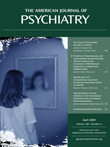House Calls with William Carlos Williams, M.D.
In the period between 1950 and 1953, Robert Coles, then a medical student in New York City, was invited to accompany the great poet-physician William Carlos Williams on house calls in and around Rutherford, New Jersey. Many years later, Thomas Roma, an award-winning photographer, obtained the addresses of the houses and areas visited by Dr. Williams and then asked the gifted Dr. Coles to write a memoir of what he saw and learned with and from Dr. Williams on those house calls. House Calls with William Carlos Williams is a loving compilation and weaving of the wisdom and poems of Dr. Williams, the sensitivity, insight, compassion, and warmth of Dr. Coles, and the exquisite beauty and grace of Mr. Roma’s black and white photographs. I couldn’t put the book down.
Robert Coles’ ability to speak with his own magnificent tone and words, coupled with his wonderful capacity to transmit what he learned from his mentor so long ago, is a most powerful and generous gift. The simplicity of the words is stunning, starting with Dr. Williams saying of the importance of making house calls, “Hell, it’s the doctor’s job to help his patient, when he can, wherever they are” (p. 6). I wondered how many of us make house calls anymore, and, if we do, would take the time to take medical students along. How many of us offer to see patients in their homes, in the middle of the night, and are able to rely on the content of the “black working bag”?
Along the routes of the house calls, Dr. Williams conveyed his views on people and life and provided social commentaries. Using Dr. Williams’ own poems, and the beautiful photography, Robert Coles helps us understand the typical home visit:
I try in the beginning to get that (doctor’s) bag aside; I want to be a visitor first, then an advisor, and I hope a helper, after we’ve all settled down, settled into the job ahead—the telling by the patient and his or her family and the asking by me, then the doing, by hand alone (thump, thump on the chest, gliding on the skin to tell the temperature, the sweat, any rash), and then on with the big-deal instruments that signal knowledge, capability, diagnosis: the stethoscope, the ophthalmoscope, the otoscope, the neurological hammer. (p. 38)
More important than the steel instruments, though, Dr. Williams took the time to look at and understand people in their own neighborhoods and homes. Much like artists do with paint and easel and photographers with cameras, Dr. Williams labored to get the “right picture” of the patient, family, and setting (p. 103) and often said, “Great to see, thereby to know” (p. 104).
While house calls may no longer be part of the repertoire of what many physicians do on an everyday basis, the messages that are conveyed in this simple, elegant, and beautiful book remain as true as they did a half century ago—with sincere appreciation to Robert Coles and Thomas Roma for sharing these powerful experiences with us.



